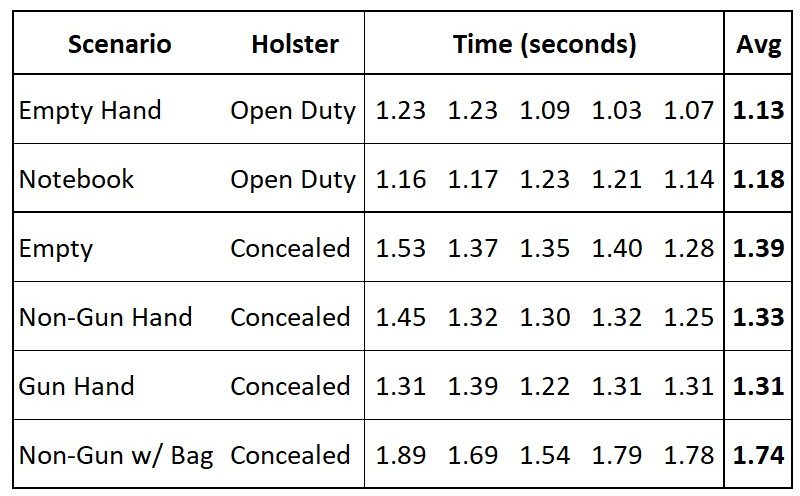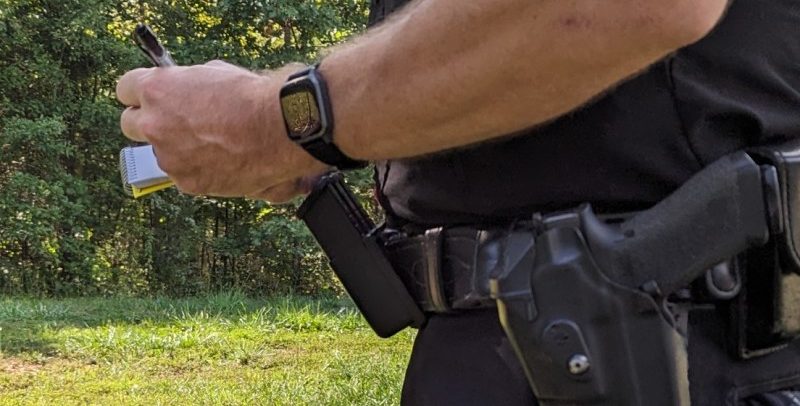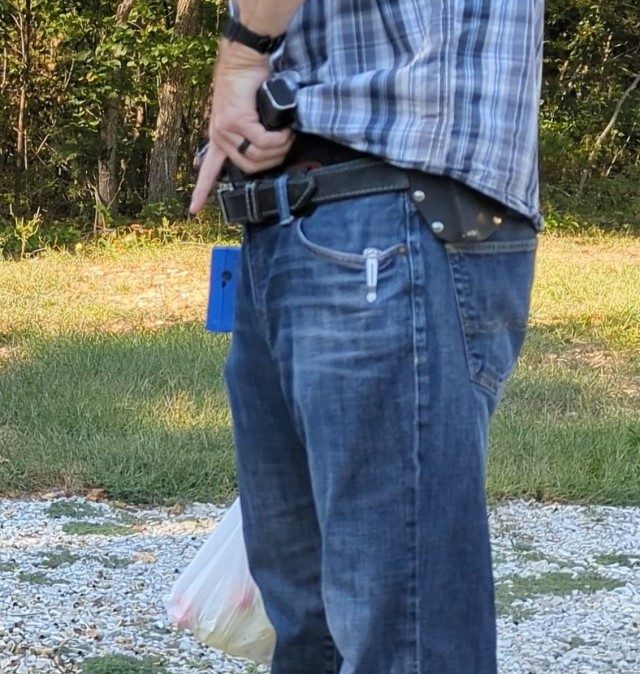When I went through the police academy, every recruit learned the consequences of carrying anything besides a gun in their gun hand. We quickly learned to carry backpacks, lunch boxes, and coffee cups in our non-gun hand. Those who violated this rule experienced intense physical training. Ultimately, we developed a deep-seated habit of keeping our gun hand empty as much as possible.
As the years progressed, my peers and I discussed how realistic keeping your gun hand empty is throughout your normal daily activities. While it’s ideal to keep that hand unoccupied, it’s unrealistic. Furthermore, training has acknowledged this reality. I’ve seen a gradual transition towards training to make the gun hand available at a moment’s notice. There are a lot of elements behind keeping your gun hand empty and how to train if it isn’t. Without further ado, let’s discuss and address these factors. In addition, does keeping your gun hand empty really affect your response time?
What does the data say about keeping the gun hand empty?
For those familiar with my previous ventures into analyzing firearms accessories, skills, and training; I’m a big proponent of using data to develop measurable conclusions about the effectiveness of a particular piece of gear or a training tool. In past tests, we’ve developed some conclusions about the effectiveness of dry fire, aftermarket triggers, and optics. The same holds true in developing conclusions about the importance and effectiveness of keeping your gun hand unoccupied.
To develop some conclusions about the importance of keeping your gun hand empty, I set up some simple scenarios to determine how much an occupied, or unoccupied, gun hand influences one’s ability to access their firearm. The testing was simple: at the seven-yard line, I used a start timer to test the time on target for one shot on a 66% IPSC steel target.
The scenarios had two categories: open carry duty setup (shot from a Safariland ALS holster) and concealed carry appendix (shot with a button-down shirt acting as the concealment garment). Hands were at the belt line for duty scenarios while hands were at the sides for concealment. Each scenario had five strings of fire for an average. The duty scenario was shot with hands empty followed by hands holding a pen and notepad. The concealed carry scenario had three variations: hands empty, grocery bag in non-gun hand, and grocery bag in gun hand. I ultimately added a fourth variation: a grocery bag in non-gun hand but retained throughout the drill. This forced a one-hand draw since the non-gun hand was occupied.

The shot strings were averaged to smooth out any outlying shots that were slightly faster or slightly slower. With this data, some conclusions about keeping the gun hand empty became clear.
Gun Hand Empty or Not – There’s No Difference
The surprising component of this simple test was discovering there was no realistically discernible difference between having your hands occupied or empty. Why? Well, the provided data should come with a disclaimer: I’ve practiced emptying my hands quickly if a threat is perceived and dropping what I have to address the threat in front of me. This is a learned skill and not something we do intuitively.
There is voluminous documentation through body and dash camera footage of law enforcement keeping their hands occupied when those hands should be addressing, or obtaining tools to address, the problem in front of them. Your flashlight, car keys, etc, are no good if they are ineffective in fixing the problem. Training to drop whatever is in your hands is a skill worth practicing regularly.

From this small dataset, the time lost if your hands are occupied in a law enforcement scenario is negligible. The difference, approximately .05 seconds, was so minuscule that the human eye cannot perceive this discrepancy nor can it react to it. Overall, training to make your hands empty is more important than keeping your hands empty.
Concealed Carry is Different From Duty
For those in a concealed carry role, the data is very similar. I should note that the empty-hand scenario was slightly slower as I was shooting it without warming up. By the time I went to the hands-occupied scenarios, I had gained some speed – hence why the times averaged out a little faster. The grocery bag was immediately let go in the occupied gun/non-gun hand scenarios before I moved to access my firearm. The overall difference between my gun hand and non-gun hand being occupied was approximately .02 seconds. Again, a difference so miniscule that it’s negligible. You’re reaction is already between .5 to 2 seconds or more behind the threat’s actions. A couple hundredths of a second has no bearing on the outcome of such an encounter.

The greatest difference in time for all the scenarios was when I kept my non-gun hand occupied with the grocery bag. For concealed carry this is problematic. Without a second hand to remove my concealment garment, my average draw time increased by approximately four-tenths of a second. This is a substantial and measurable difference in response time. Increases in response times like this do play a factor in the outcome during threat engagement.

It’s unrealistic to expect the armed citizen to keep both hands available at a moment’s notice. This statement lacks empathy for the reality many of us face in our daily activities. If you have little ones, you can’t let them go or ignore their safety. They may need to be guided out of harm’s way. If you’re with unprepared company, you may need to guide them or other persons to safety while drawing. A complete concealed carry mindset and training regimen considers these possibilities. Having your non-gun hand occupied can, and will, slow down concealed carry draw time.
Train for Your Reality, Not Someone Else’s
I respect my past instructors and don’t want to minimize the importance of the knowledge they shared. However, unchallenged knowledge reinforces bad habits. This leaves underlying problems unresolved.
The issue at hand (pun intended) is not about keeping the gun hand empty. Our gun hand may be occupied for any number of reasons throughout our day. It’s unavoidable. We should train to empty our hands at a moment’s notice while accounting for the possibility a hand may be occupied. We don’t dictate the circumstances of a violent encounter, the perpetrator does. However, we can prepare, train, and practice sound responses to the possible scenarios we could encounter when least expected. In short, practice emptying your hands and drawing from concealed carry or, if applicable, duty setups. Then, practice accomplishing that draw with your gun hand only. These skills are more practical than simply keeping your dominant hand empty unless a gun is needed.


